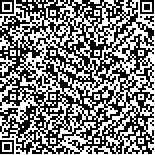| Author Name | Affiliation | | Jianxin Ma | Communication Research Centre, Harbin Institute of Technology, Harbin 150001, China | | Shuo Shi | Communication Research Centre, Harbin Institute of Technology, Harbin 150001, China | | Si Tian | Communication Research Centre, Harbin Institute of Technology, Harbin 150001, China | | Xuemai Gu | Communication Research Centre, Harbin Institute of Technology, Harbin 150001, China |
|
| Abstract: |
| In this paper, we present a protocol, CEWEC (Collaborative, Event-Triggered, Weighted, Energy-Efficient Clustering), based on collaborative beamforming. It is designed for wireless sensor nodes to realize the long-distance transmission. In order to save the energy of sensor nodes, a node wakes up when it has data to be uploaded. In our protocol, multi-layer structure is adopted: trigger-node layers, clusterhead-node layers, child-node layers. The number of child nodes and clusterheads depends on the distance of transmission. Clusterheads are selected according to the node’s weight which is based on its residual energy and distance to the trigger node. The main characteristic of this protocol is that clusterheads can directly communication with each other without the large-scale base station and antennas. Thus, the data from the trigger node would be able to be shared within the multi-layer structure. Considering the clustering process, energy model, and success rate, the simulation results show that the CEWEC protocol can effectively manage a large number of sensor nodes to share and transmit data. |
| Key words: Sensor networks clustering collaborative beamforming energy efficiency network lifetime |
| DOI:10.11916/j.issn.1005-9113.2016.05.002 |
| Clc Number:TN92 |
| Fund: |






